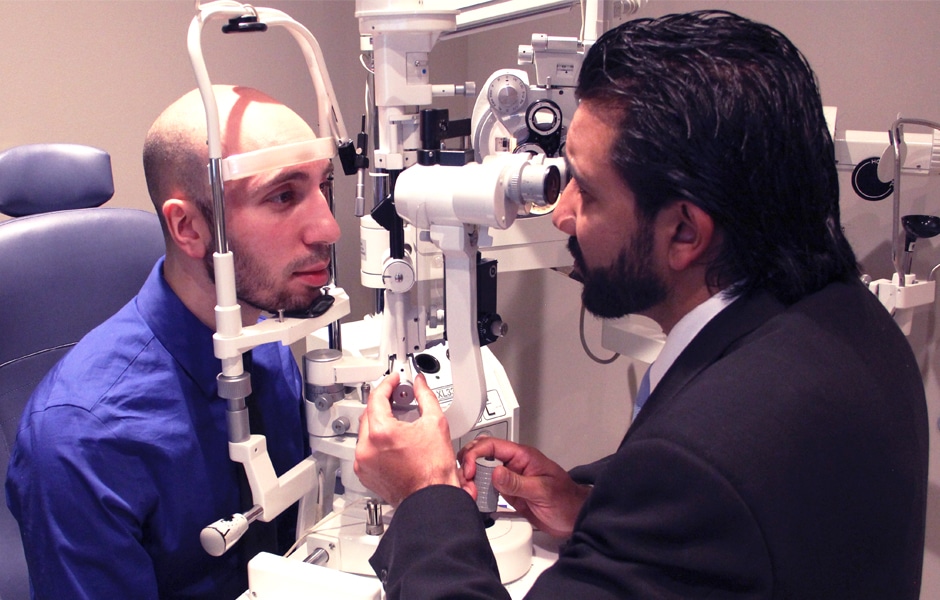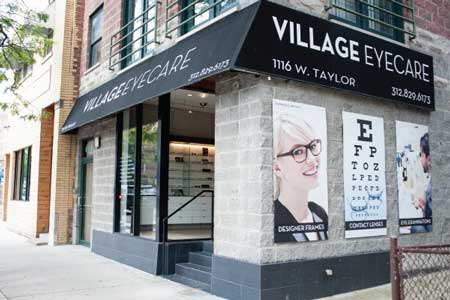Pediatric Eye Treatment at Andalusia Pediatrics: Caring for Youthful Eyes
Pediatric Eye Treatment at Andalusia Pediatrics: Caring for Youthful Eyes
Blog Article
Comprehending the Different Vision Modification Procedures Available for Clearer View
In the realm of vision modification procedures, a wide range of options exist to attend to refractive mistakes and provide people with clearer view. From the extensively acknowledged LASIK surgical treatment to less intrusive procedures like PRK and implantable lenses, the field of ophthalmology offers a series of methods tailored to fit different demands and choices. Each procedure features its own collection of considerations, benefits, and potential threats. Comprehending the nuances of these vision improvement techniques is vital for making notified choices about one's aesthetic health. Let's check out the complexities of these procedures and dropped light on the path to accomplishing improved vision quality.
LASIK Surgery
LASIK surgical procedure is a common refractive treatment used to correct vision problems such as nearsightedness, astigmatism, and farsightedness. This medical strategy, which stands for Laser-Assisted in Situ Keratomileusis, intends to improve the cornea to boost exactly how light is concentrated on the retina, ultimately boosting vision quality.
Among the main benefits of LASIK surgery is the rapid improvement in vision experienced by people. Several people discover a considerable enhancement in their eyesight immediately after the treatment. Furthermore, a lot of clients report minimal pain and pain during the surgery and recuperation duration. The healing time for LASIK is relatively fast, with numerous people going back to their daily activities within a day or 2 post-operation. On the whole, LASIK surgical treatment is a popular selection for people seeking a lasting option for their vision problems.
PRK Treatment

PRK is a suitable option for individuals with slim corneas or those at a higher risk of eye injuries, as it does not include producing a corneal flap. The recovery procedure for PRK is a little longer contrasted to LASIK, as the epithelium requires time to restore. Patients may experience discomfort and blurred vision for a couple of days adhering to the treatment.
Regardless of the longer healing time, PRK can yield outstanding cause vision enhancement, making it a beneficial choice for those that may not appropriate candidates for LASIK surgical treatment. - Neurologist Andalusia
Implantable Lenses
As opposed to PRK where the cornea is reshaped straight, implantable lenses supply an additional approach for dealing with vision by putting fabricated lenses inside the eye. This treatment is especially valuable for people with high levels of farsightedness, astigmatism, or nearsightedness who may not appropriate prospects for laser surgical treatments like LASIK or PRK.
Implantable lenses, additionally understood as phakic intraocular lenses, job by supplementing the eye's all-natural lens with a man-made one. These lenses can be put before the all-natural lens (anterior chamber) or behind the iris and in front of the natural lens (posterior chamber) By adjusting the power and positioning of these lenses, eye doctors can efficiently deal with refractive mistakes and improve visual skill.
One benefit of implantable lenses is that they are removable and exchangeable, providing adaptability for future modifications. As with any kind of medical procedure, there are threats included, such as infection or cataract formation. Individuals thinking about implantable lenses should speak with an eye care professional to figure out the most appropriate alternative based on their specific needs and eye wellness.
Corneal Rings

The procedure for putting corneal rings is fairly fast and minimally intrusive, commonly performed as an outpatient treatment. Throughout the surgery, the ophthalmologist makes a tiny laceration in the cornea and inserts the rings at a specific deepness. As soon as in area, the rings aid to reshape the cornea, offering a smoother surface area for light to go into the eye, which can lead to clearer vision.
Corneal rings are considered a relatively easy to fix procedure, as they can be eliminated or replaced if required. While they may not entirely remove the requirement for glasses or get in touch with lenses, corneal rings can considerably enhance vision quality and overall visual comfort for individuals with keratoconus or various other corneal abnormalities.
Refractive Lens Exchange
Complying with the why not check here adjustment of corneal irregularities with procedures like corneal rings, another vision improvement method that can deal with refractive errors is Refractive Lens Exchange (RLE) RLE is a surgery that involves changing the eye's all-natural lens with a synthetic intraocular lens (IOL) to correct refractive mistakes such as farsightedness, nearsightedness, and presbyopia. This procedure is particularly beneficial for people who might not appropriate candidates for procedures like LASIK or PRK because of elements such as slim corneas or high refractive errors.
RLE belongs to cataract surgical procedure, as both involve getting rid of the eye's natural lens; however, in RLE, the lens is clear, not gloomy as in cataracts. The synthetic lens dental implanted during RLE can be personalized to deal with the person's specific refractive error, giving clear vision at different ranges. Recovery time for RLE is fairly fast, and clients can anticipate improved vision not long after the treatment. Similar to any type of medical procedure, prospective threats and complications exist, so a detailed appointment with an eye care professional is vital to determine if RLE is more the ideal vision improvement alternative.
Conclusion

In the realm of vision correction treatments, a wide variety of choices exist to attend to refractive mistakes and give individuals with more clear sight.LASIK surgery is a common refractive procedure used to correct vision troubles such as astigmatism, nearsightedness, and farsightedness.While also an usual refractive treatment, the PRK (Photorefractive Keratectomy) technique differs from LASIK surgery in its technique to fixing vision troubles.Following the modification of corneal irregularities with treatments like corneal rings, an additional vision adjustment strategy that can address refractive mistakes is Refractive Lens Exchange (RLE) LASIK surgical procedure, PRK procedure, implantable lenses, corneal rings, and refractive lens exchange are all choices that can resolve different vision problems.
Report this page